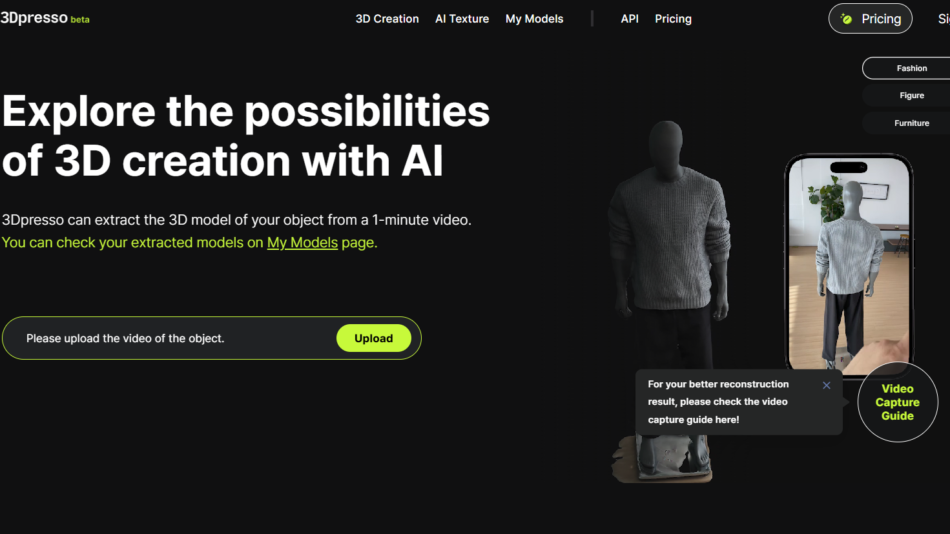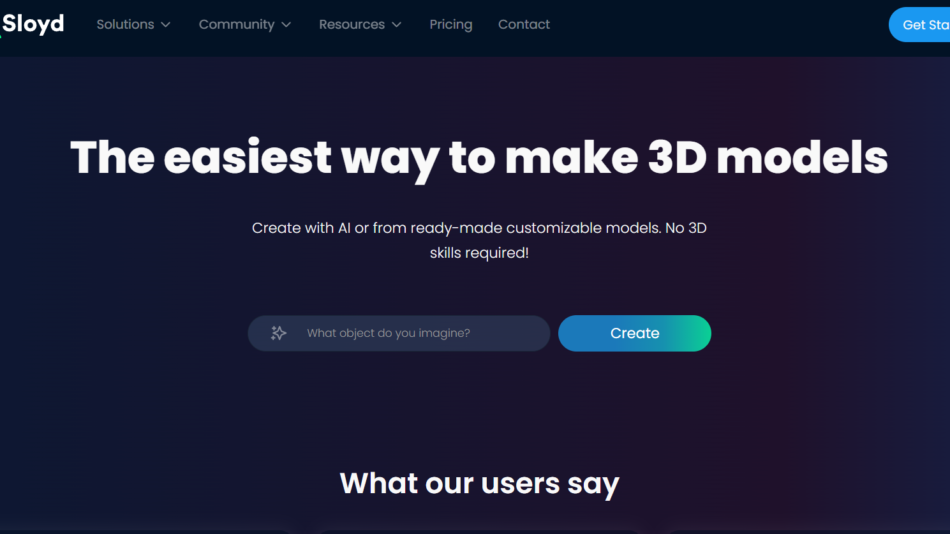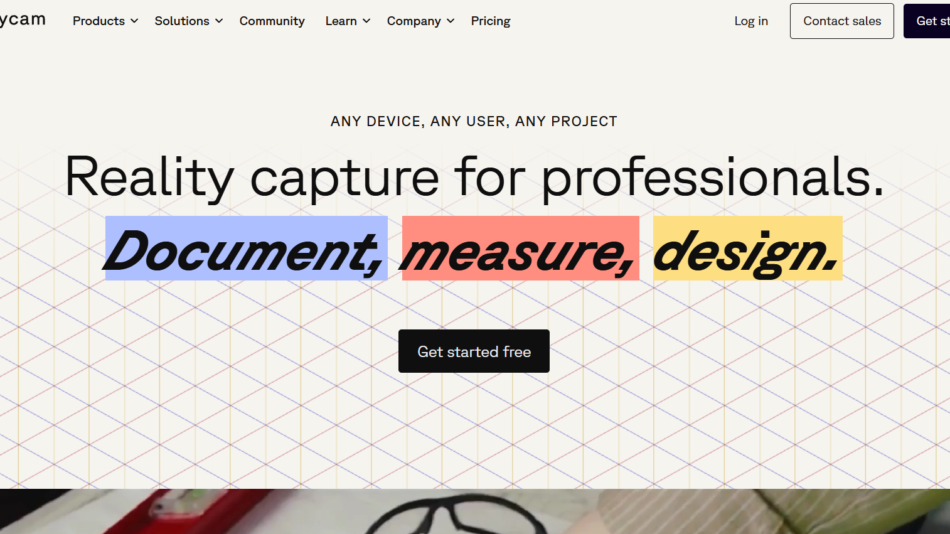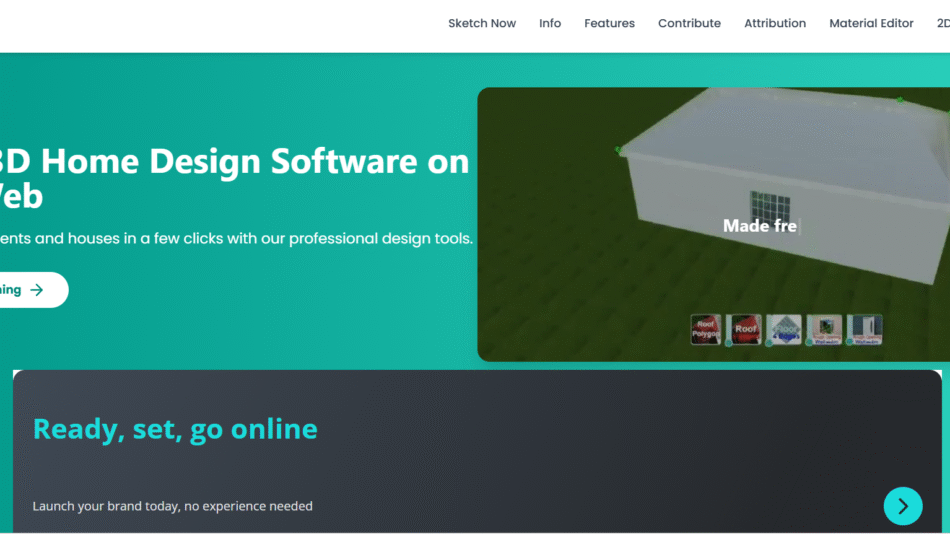Creating high-quality 3D models can be complex and time-consuming, requiring specialized skills and software. Hyper3D AI is an AI-powered 3D model generation and visualization platform that simplifies the process by automating 3D content creation, enhancing designs, and enabling real-time 3D rendering.
With AI-driven modeling, texture generation, and scene visualization, Hyper3D AI is designed for game developers, architects, designers, and digital artists looking for an intuitive, AI-assisted 3D design workflow.
This article explores Hyper3D AI’s features, how it works, use cases, pricing, strengths, drawbacks, comparisons with other 3D modeling tools, and customer feedback.
Features of Hyper3D AI
AI-Powered 3D Model Generation
- Uses AI to convert 2D images into fully rendered 3D models.
- Automates object modeling and texturing for faster design workflows.
Real-Time 3D Rendering & Visualization
- Provides high-quality, real-time rendering with AI-enhanced lighting and materials.
- Supports interactive 3D scene previews for instant design validation.
AI-Generated Textures & Materials
- Automatically creates realistic textures based on image inputs.
- Offers customizable surface details, lighting effects, and material enhancements.
Cloud-Based 3D Editing & Collaboration
- Allows users to edit 3D models in the cloud without installing software.
- Supports real-time collaboration for teams working on 3D projects.
Seamless Integration with 3D Design Software
- Exports 3D models to Blender, Unity, Unreal Engine, and other platforms.
- API access for custom integrations in gaming, architecture, and AR/VR development.
How Hyper3D AI Works
Step 1: Upload or Generate a 3D Model
- Users upload 2D images or sketches, and AI generates a 3D model.
Step 2: AI-Enhanced Texturing & Rendering
- AI applies realistic textures, lighting, and depth effects to improve model quality.
Step 3: Edit & Customize in Cloud Workspace
- Users can modify 3D objects, adjust textures, and add environmental elements.
Step 4: Export & Integrate with 3D Applications
- Models can be exported to game engines, design software, or AR/VR platforms.
Use Cases of Hyper3D AI
Game Development
- Automates 3D asset creation for characters, environments, and objects.
- Provides AI-enhanced textures and lighting for realistic game graphics.
Architecture & Interior Design
- Generates 3D models of buildings, furniture, and interior layouts.
- AI assists in material selection and real-time rendering for design previews.
Augmented Reality (AR) & Virtual Reality (VR)
- Converts real-world objects into 3D models for AR/VR applications.
- Enhances immersive experiences with AI-powered 3D visualizations.
Product Design & Prototyping
- Creates 3D product prototypes with AI-driven modeling.
- Helps designers visualize and refine product concepts in 3D.
Hyper3D AI Pricing
Basic Plan (Free)
- Limited AI-generated 3D models and basic rendering tools.
- Export to standard file formats.
Professional Plan
- Full AI-powered 3D modeling, texturing, and rendering tools.
- Advanced editing and customization features.
Enterprise Plan
- Bulk 3D asset generation and API access.
- Custom workflow automation and business solutions.
For detailed pricing, visit the Hyper3D AI Pricing Page.
Strengths of Hyper3D AI
- AI-powered 3D modeling speeds up content creation.
- Real-time rendering and texturing enhance design quality.
- Cloud-based platform enables easy access and collaboration.
- Seamless integration with game engines and design software.
- No need for advanced 3D modeling skills to create high-quality assets.
Drawbacks of Hyper3D AI
- Advanced customization features may require a paid plan.
- May not replace traditional 3D modeling for highly complex designs.
- Cloud-based platform requires a stable internet connection.
Comparison with Other 3D Modeling Tools
Hyper3D AI vs Blender
- Blender offers manual 3D modeling, while Hyper3D AI provides AI-powered automated model generation.
- Hyper3D AI is better for users looking for AI-assisted 3D asset creation.
Hyper3D AI vs Unreal Engine MetaHuman
- MetaHuman specializes in character modeling, while Hyper3D AI offers broader AI-powered 3D asset creation.
- Hyper3D AI is ideal for game developers needing quick 3D content generation.
Hyper3D AI vs NVIDIA Omniverse
- NVIDIA Omniverse is a collaborative 3D simulation tool, while Hyper3D AI focuses on AI-powered model creation and visualization.
- Hyper3D AI is more accessible for independent creators and small teams.
Customer Reviews and Testimonials
Positive Feedback
- “Hyper3D AI made it incredibly easy to generate high-quality 3D models for my game!” – Game Developer
- “The AI-powered texture generation saved me hours of manual work!” – 3D Designer
- “Real-time rendering helps me visualize designs instantly without expensive hardware.” – Architect
Constructive Criticism
- “Would love more control over fine-tuning AI-generated models.” – Product Designer
- “Cloud processing is great, but I wish there was an offline version.” – AR/VR Developer
Conclusion
Hyper3D AI is an AI-powered 3D modeling and visualization tool designed to simplify 3D asset creation, texturing, and rendering. Whether you’re a game developer, architect, product designer, or AR/VR creator, Hyper3D AI offers intelligent automation and real-time rendering to accelerate the 3D design workflow.
Looking for AI-powered 3D model generation? Try Hyper3D AI today!















